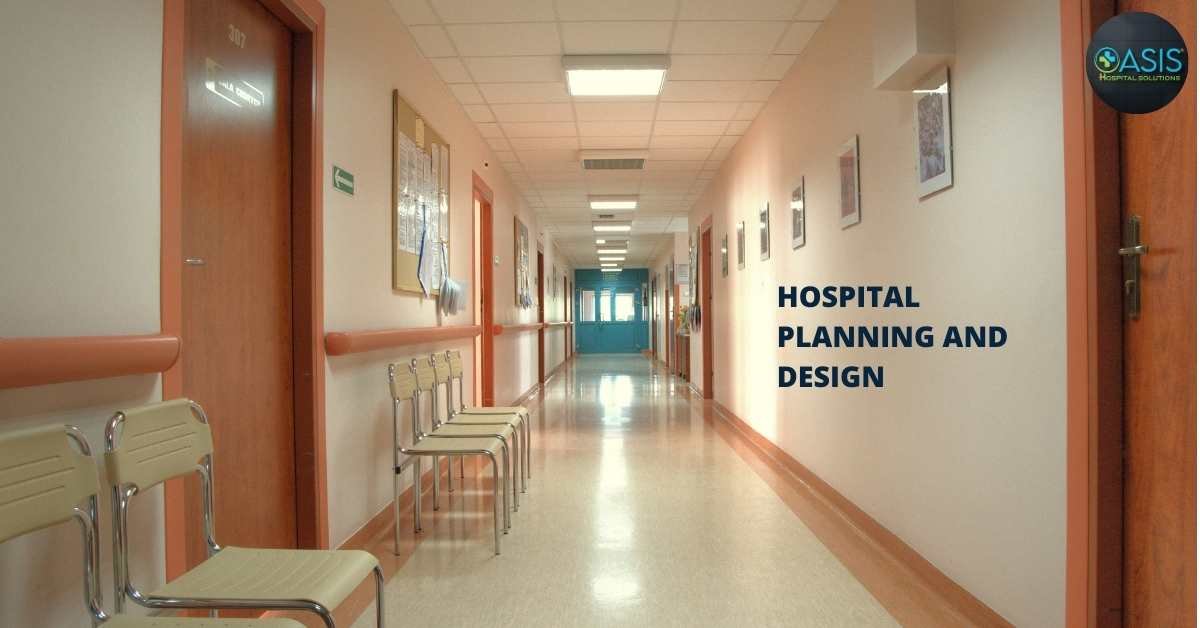Hospital Planning and Design: Shaping the Future of Healthcare
The process of hospital planning and design is a meticulous and strategic endeavor, influencing the very foundation of healthcare facilities. Beyond the stethoscopes and operation theaters, the physical structure and layout of a hospital contribute significantly to the overall healthcare experience. Let's delve into the various facets of hospital planning and design that shape the future of healthcare.
Significance of Hospital Planning and Design
In the intricate web of healthcare, the planning and design of a hospital stand as the framework on which the entire system operates. It goes beyond creating visually appealing structures; it is about optimizing spaces for functionality, ensuring patient safety, and aligning with evolving healthcare standards.
Key Components of Hospital Planning and Design
Architectural Design
The aesthetic appeal of a hospital is just the tip of the iceberg. Architectural design considers the overall layout, building materials, and aesthetic elements while focusing on creating an environment conducive to healing.
Space Utilization
Efficient use of space is a critical aspect of hospital planning. Every square foot should be optimized for patient care, staff workflow, and future scalability.
Equipment Placement
Strategically placing medical equipment ensures accessibility and streamlines operations, reducing the time needed for critical procedures.
Patient and Staff Movement
A well-designed hospital facilitates smooth movement, reducing congestion, and enhancing overall operational efficiency.
Role of Design Teams
Hospital design and architectural teams play a pivotal role in patient recovery. Their expertise not only minimizes the need for future renovations but also ensures that the hospital environment promotes healing and safety.
Contributions to Patient Recovery
Thoughtful design contributes to the psychological well-being of patients, expediting the recovery process and improving overall outcomes.
Minimizing Future Renovation Expenses
By anticipating future needs and trends, design teams help in minimizing the need for costly renovations, ensuring long-term sustainability.
Enhancing Patient Safety
Strategic layouts, well-lit spaces, and ergonomic designs contribute to a safer environment for both patients and healthcare professionals.
Engaging a Hospital Planning and Design Company
The complexity of hospital planning necessitates professional assistance. A hospital planning and design company, such as Oasis, ensures that your facility is not just a structure but a well-optimized space for healthcare delivery.
Visual Appeal and Functionality
Oasis prioritizes both aesthetics and functionality, creating hospitals that are visually appealing yet highly functional.
Optimizing for Safety
The company integrates safety measures into the design, ensuring that the hospital environment meets the highest standards of safety and compliance.
Services Offered by Oasis
Master Planning & Campus Design
Strategic planning of the entire hospital campus for optimal functionality and growth.
Medical Planning Services
Tailored planning for medical facilities, considering specific healthcare requirements.
Turnkey Architecture Design
Complete end-to-end architectural design services, ensuring a cohesive and efficient layout.
Architectural Design Review
Thorough review and analysis of existing designs for improvements and compliance.
Remodeling, Renovation & Expansion of Services
Expertise in revamping existing facilities, ensuring they align with evolving healthcare needs.
Hospital Project Management Consulting
Comprehensive consulting services to oversee and manage the entire hospital project.
Challenges and Solutions in Hospital Planning and Design
Balancing Aesthetics and Functionality
The challenge lies in creating visually appealing spaces with the functionality required for optimal healthcare delivery.
Addressing Evolving Healthcare Standards
Design teams must stay abreast of changing healthcare standards to ensure their designs meet regulatory requirements.
Incorporating Technological Advancements
Integrating the latest technology ensures that hospitals are equipped to provide cutting-edge healthcare services.
Case Studies
Explore successful hospital design projects undertaken by Oasis, showcasing tangible improvements in patient care, staff efficiency, and overall operational excellence.
Future Trends in Hospital Design and Planning
Adaptive Design for Changing Healthcare Needs
Flexibility in design to accommodate changing healthcare needs and advancements.
Sustainable and Eco-friendly Designs
Incorporating green and sustainable practices for a healthier environment.
Integration of Technology for Smart Healthcare Facilities
Embracing technology for improved patient care, data management, and operational efficiency.
Conclusion
Hospital planning and design are the unsung heroes of healthcare, shaping the environment in which healing occurs. Beyond bricks and mortar, the thoughtful layout and design contribute significantly to patient recovery, safety, and operational excellence. As you embark on the journey of creating or renovating a hospital, consider the expertise of professionals like Oasis to ensure your facility stands at the forefront of healthcare innovation.
FAQs
How does hospital design impact patient recovery?
Hospital design influences patient psychology, contributing to a positive healing environment, thus expediting recovery.
What are the key considerations in space utilization?
Efficient use of space is vital, optimizing it for patient care, staff workflow, and future scalability.
Why is engaging a design company essential?
Professional design ensures a balance between aesthetics and functionality, meeting healthcare standards.
Can hospital design contribute to cost savings?
Yes, by anticipating future needs

